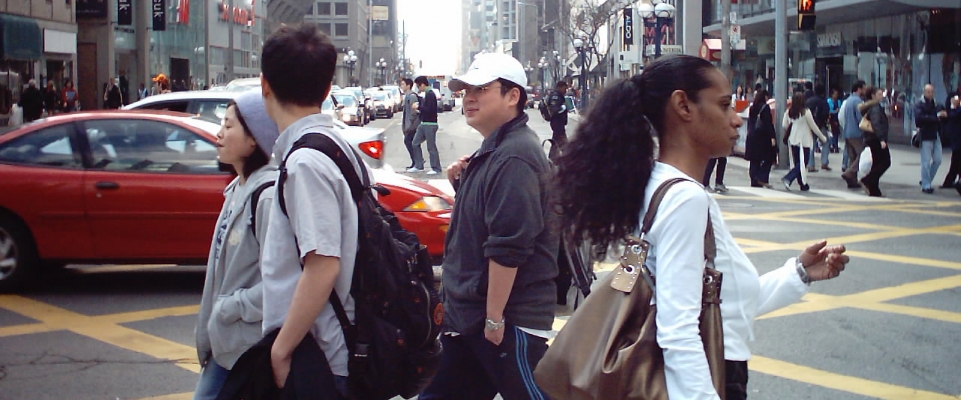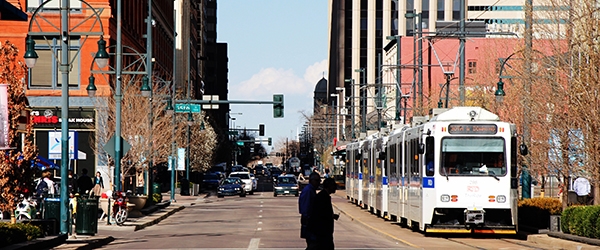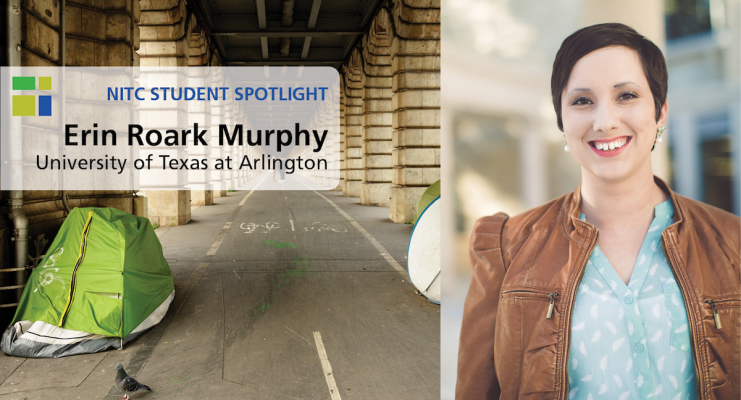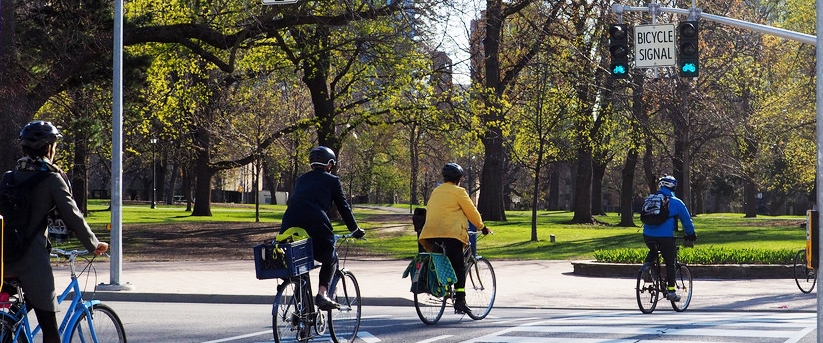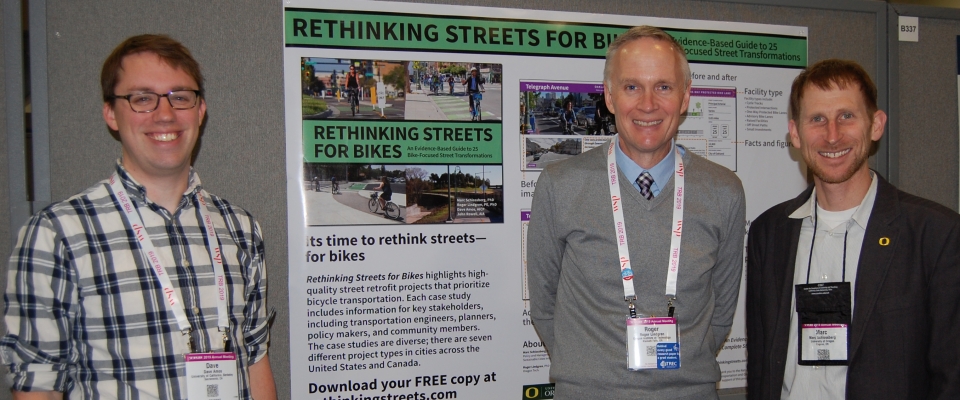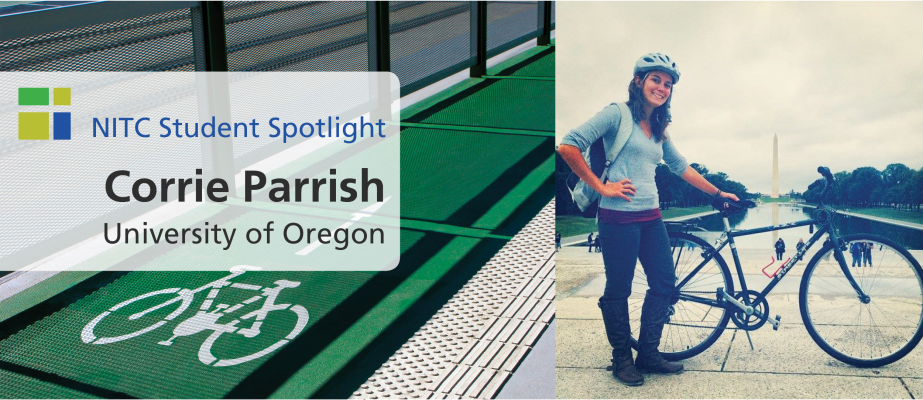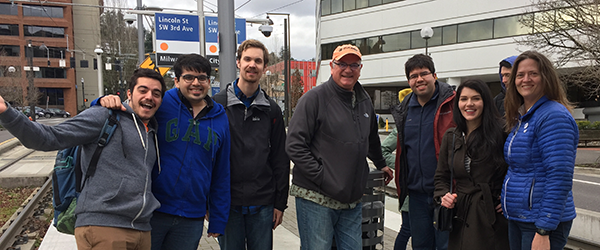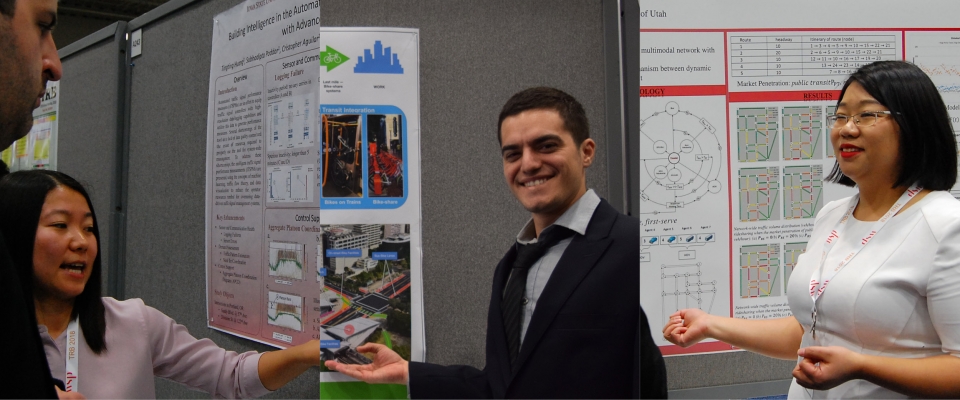The latest NITC report offers improved tools for pedestrian modeling.
Led by Kelly Clifton of Portland State University, researchers had previously created the the MoPeD pedestrian demand model as well as a pedestrian index of the environment (PIE) for forecasting pedestrian travel. The PIE index improved the sensitivity of walk trip models by incorporating contextual features of the built environment that affect walking behavior in the Portland, Oregon region. Read about Clifton's previous body of work on context-specific modeling.
Useful for academic researchers in transportation, Clifton's research provides a framework for incorporating pedestrian travel behavior forecasts into traditional four-step travel demand models.
Since the method was based on Portland, the next step was to adapt the tools for wider use. In this new report, Clifton and Jaime Orrego-Onate of...
Read moreThe National Institute for Transportation and Communities (NITC) program has released its 2019 general research request for proposals. Faculty at NITC's partner universities* are invited to submit abstracts by March 29, 2019.
Through funding provided by the U.S. DOT, we will award up to $1,000,000 to research projects that support NITC’s theme: improving mobility of people and goods to build strong communities. Our theme includes a few key topics:
- Increasing access to opportunities
- Improving multi-modal planning and shared use of infrastructure
- Advancing innovation and smart cities
- Developing data, models, and tools
2019 RESEARCH PRIORITIES
The NITC Advisory Board has provided input into several research priorities that relate to multimodal transportation data and the transportation-land use-housing connection. NITC is prioritizing the funding of proposals that directly addresses research questions related to:
Developing Data, Models and Tools. Agencies are confronting a plethora of new mobility options along with new data sources to support transportation research, planning, and analysis. Several priority research areas have been identified to increase understanding:
- Collection of multimodal data...
Erin Roark Murphy, University of Texas at Arlington
Erin Roark Murphy, LMSW, is a doctoral student in the School of Social Work at the University of Texas at Arlington (UTA). She is a NITC student scholar and has worked as a graduate research assistant on several NITC-funded projects, including "Evaluating Improved Transit Connections for Ladders of Opportunity" and "How Can Interdisciplinary Teams Leverage Emerging Technologies to Respond to Infrastructure Needs? A Mixed-Methods Evaluation of Civil Engineers, Urban Planning, and Social Workers’ Perspectives."
Tell us about yourself?
I am in the third year of my PhD program at UTA in the School of Social Work. My personal research focuses on looking at homelessness...
Read moreMost people who bike for transportation can probably think of "that one intersection:" The light where it's impossible to get a green without waiting. Even when there are no cars, pedestrians or other bikes in sight, you still know you'll have to stop and wait a while, sacrifice all your momentum, and wish you could have given the signal advance notice that you were coming.
Researchers at the University of Oregon have created an app for that.
Lead investigator Stephen Fickas, a computer and information science professor at the UO, developed the app, along with a specially-designed Bike Connect ‘box' (watch the 3-minute video) that attaches to a traffic signal controller. With the box installed, the app allows a cyclist to...
Read more- Download the Final Report (PDF)
- Download the Guidebook: Rethinking Streets for People on Bikes (PDF)
- Watch the Feb 27th webinar
The National Institute for Transportation and Communities (NITC) is excited to announce the publication of a new visual design guide, "Rethinking Streets for Bikes." Focused on case studies in the U.S., the guidebook will make it easier for North American city officials to design streets with bikes (and the people on them) in mind.
There is...
Read moreCorrie Parrish, University of Oregon
Corrie Parrish is a masters student in the community and regional planning program at the University of Oregon (UO). She is the current president of LiveMove, UO's transportation and livability student group, as well as the Equity Initiative graduate employee for UO's School of Planning, Public Policy, and Management (PPPM). She has also worked as an outdoor recreation assistant and naturalist assistant for Five Rivers MetroParks in Ohio, and as an outreach and project coordinator for the U.S. Fish and Wildlife Service in New Mexico.
Update (March 2019): Recipient of the Eno Future Leaders Award
Corrie Parrish has been selected as one of 20 of the nation's top graduate students in transportation and will take part in the prestigious Eno Future Leaders Development Conference, taking place in Washington, DC, June 2 – 6, 2019! The Future Leaders Development Conference provides a first-hand look at how transportation policy is developed and implemented. Corrie and others will meet with top government officials, leaders of...
Read moreFor the second year in a row, we're opening up an exciting opportunity for undergraduate students interested in transportation: Spend a summer at Portland State University to learn more about the world of research in transportation through our Transportation Undergraduate Research Fellowship (TURF) program. This program is open to current undergraduate students from any university who are interested in learning more about transportation engineering or planning research.
Hosted at PSU, selected students will be paired with a PSU faculty mentor (from either the College of Urban and Public Affairs or the Maseeh College of Engineering & Computer Science). The student will carry out research on a transportation project for ten weeks at 40 hours per week. TURF Fellows are provided a $7,500 stipend, but must find and fund their own lodging.
Decisions will be made by March 29, 2019. Contact us at asktrec@pdx.edu with any questions.
Read moreThis page serves as a homebase for our coverage of the 2019 Transportation Research Board (TRB) annual conference. Check back here for ongoing updates, as well as our Twitter and Facebook.
NITC GUIDE TO TRB (PDF): Our printable schedule of where all of our NITC researchers will be presenting at lectures, poster sessions, and workshops
NITC RECEPTION AT TRB: Join us for transportation bingo and networking on Tuesday, January 15 (7:30–10:30pm) nearby at Fado Irish Pub
NITC STUDENT AWARD AT CUTC BANQUET: We’ll be celebrating our 2018 NITC “Student of the Year," Travis Glick of Portland State University, at the annual CUTC Banquet. Travis is a NITC scholar and graduate research assistant, and will present work in three TRB sessions.
MULTI-UNIVERSITY COLLABORATIVE PROJECT HIGHLIGHTS:
- ...
As transit agencies modernize their fare payment systems, opportunities to pay with cash diminish. This speeds boarding and lowers the cost of operations, while also creating new sources of ridership data. Arguably, service is improved for riders as well, where payment systems work across modes, and in some cases different transit providers, creating a more seamless and simplified experience. Still, about 15% of adults in the United States are without a bank account or credit card, and many rely on restrictive cell-phone data plans or don’t have access to a smartphone. These shares are even higher for public transit users. As transit fare technologies move further from cash, these digitally-excluded riders will find it more difficult to conveniently pay their transit fares.
In the latest project to be funded under the National Institute for Transportation and Communities (NITC)'s Pooled Fund grant program, researchers from...
Read moreIt can be expected that automated vehicles and human-driven vehicles will coexist in the transportation network for quite some time. In order to support various traffic control tasks it is critical to develop a reliable model to understand the real-time traffic patterns in this mixed environment. A new report from the National Institute for Transportation and Communities (NITC) contributes three new tools to help planners model freeway traffic with both connected automated vehicles (CAVs) and human-driven vehicles (HVs).
RESEARCH TEAM
The project...
Read more
